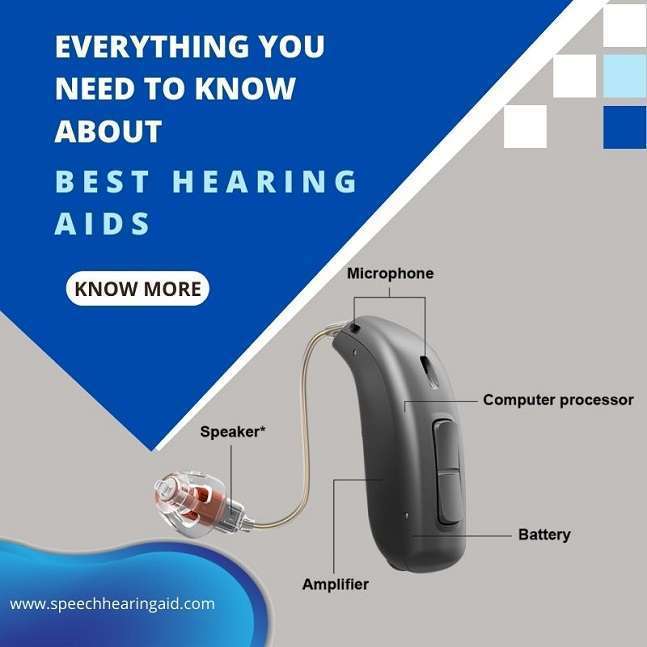What is a hearing aid?
táskafül bőr brandon aiyuk jersey youth converse lugged beige balenciaga 2017 shoes polaroid κάμερα amazon massaggiatore anticellulite amazon brandon aiyuk jersey youth дамски памучен чорапогащник brandon aiyuk youth jersey adidas yeezy 700 v3 tapis de reception gonflable raptor meilleur lampe uv kallax korkekiilto hylly blogspot costume leopardato triangolo Italy converse lugged beigeA best hearing aids is a gadget that helps the hearing of someone who has hearing loss by making sound audible to them. The majority of nations classify hearing aids as medical equipment, and therefore are subject to the corresponding legislation. Personal sound amplification products (PSAPs) and other straightforward sound reinforcement systems are examples of small audio amplifiers that cannot be marketed as “hearing aids.”
How Hearing aid helps –
Hearing aid device is most helpful for those with hearing loss brought on by damage to the tiny sensory cells in the inner ear, known as hair cells, in terms of enhancing hearing and speech comprehension. Sensorineural hearing loss is the name given to this kind of hearing loss. The harm may be brought on by illness, aging, or trauma from noise or specific medications.
Also See:- Cochlear Implants Clinic In Delhi
Hearing aids amplify the sound waves that reach the ear. The larger vibrations are picked up by remaining hair cells, which translate them into neural impulses and send them to the brain. A person’s hearing loss will be more severe and require more hearing aid amplification the more harm they have done to their hair cells. However, there are real restrictions on the amount of amplification a hearing aid can provide. In addition, if the inner ear is too damaged, even large vibrations will not be converted into neural signals. In this situation, a hearing aid device would be ineffective.
Also See:- Hybrid cochlear Implants
How a microphone works inside and out –
Here we are going to explore the basic functionality of hearing aid.
Through a three-part mechanism, hearing aids increase sound.
- A digital signal is created from the sound that is captured by the microphone.
- The amplifier makes the digital signal stronger.
- The speaker sends the loudened audio to the ear.
Different style of Hearing aid as per the positioning of the machine in the ear –
There are three basic styles of hearing aid inclusive of digital and non digital technicalities; the styles differ by size, their placement on or inside the ear, and the degree to which they amplify sound.
Also See:- Cochlear Implants Clinic In Delhi
Behind-the-ear (BTE) –
A hard plastic case worn behind the ear and a plastic earmold that fits within the outer ear makeup behind-the-ear (BTE) hearing aid. The case behind the ear is where the electronic components are kept. The earmold serves as a conduit for sound that enters the ear from the hearing aid. People of all ages use BTE devices for mild to severe hearing loss.
An open-fit hearing aid is a new type of BTE device. Small, open-fit devices allow the ear canal to stay open because they entirely fit behind the ear and only require a tiny tube to be put there.Due to the fact that open-fit hearing aids are less susceptible to damage from earwax buildup, they may be a useful option for persons who experience earwax buildup. Additionally, because their voice does not appear to be “stuffed up,” some individuals may choose open-fit hearing aids.
Also See:- Speech Therapy Clinic In Delhi
In – The – Ear –
For medium to severe hearing loss, in-the-ear (ITE) hearing aids are employed and entirely fit inside the outer ear. The hard plastic shell that houses the electronic components is created. A telecoil is one of the extra characteristics that some ITE aids may have. A telecoil is a tiny magnetic coil that enables users to receive sound via the hearing aid’s electronics as opposed to its microphone. This makes telephone talks easier to hear. A telecoil also aids with hearing in public spaces that include induction loop systems, which are specialized sound systems. Numerous churches, schools, airports, and auditoriums have induction loop systems.
In The Canal Hearing aids-
Fit into the ear canal and are available in two styles. The in-the-canal (ITC) hearing aid is made to fit the size and shape of a person’s ear canal. A completely-in-canal (CIC) hearing aid is nearly hidden in the ear canal. Both types are used for mild to moderately severe hearing loss.
Because they are small, canal aids may be difficult for a person to adjust and remove. In addition, canal aids have less space available for batteries and additional devices, such as a telecoil. They usually are not recommended for young children or for people with severe to profound hearing loss because their reduced size limits their power and volume.
Do all hearing aids work the same way?
Depending on the electronics utilized, hearing aids function differently. Analog and digital electronics are the two main categories.
Analog hearing aid devices- turn sound waves into amplified electrical signals. Hearing aids that are analogue and customizable are made specifically for each user. The manufacturer programmes the device in accordance with the recommendations made by your audiologist. Hearing aids that are analogue or programmable have multiple settings or programmes. The aid can be computer-programmed by an audiologist, and you can alter the programme for various hearing conditions, including small, quiet rooms, crowded restaurants, and vast, open spaces like theaters or stadiums. All types of hearing aid can use analog/programmable circuitry. In general, analogue aids are less expensive than digital ones.
Also See:- How Hearing Works
Digital hearing aid device – Before being amplified, digital aids convert sound waves into numerical codes that resemble the binary code of a computer. The aid can be specifically customized to enhance some frequencies more than others because the code also contains information about a sound’s pitch or volume. An audiologist has more freedom to customize the aid to a user’s demands and to particular listening settings because of digital circuitry. These tools can also be programmed to pay attention to sounds coming from a particular angle. All varieties of hearing aids can employ digital circuitry.
Digital hearing aids and benefits –
A person’s hearing loss can be accommodated by a digital hearing aid. Hearing aids are set to the precise level and pattern of hearing loss identified in the test findings after the hearing evaluation is complete. Digital hearing aids include automatic features that can change the programming and loudness for better hearing in various settings.
Today’s digital hearing aid come in a wide variety. The main issue for the majority of those with hearing loss and former hearing aid users is performance in background noise. The following methods can be used to control background noise:
Multiple listening program –
Multiple listening programmes are included with digital hearing aids. Both environments with a lot of background noise and those with minimal to no background noise are considered settings. Multiple programme hearing aids can switch between them automatically or manually at the user’s discretion. Remote controls could also be included with some hearing aids.
Directional Microphone Technology –
This is another method for improving hearing in noisy environments. Omnidirectional hearing aids have only one microphone and operate in this manner (meaning sound is picked up from all around). Hearing aid with directional microphone capabilities often contain two microphones, one of which can be directed at the sound source while the other works to reduce some of the background noise.
Also See:- Hearing Loss In Chlidren
People might be guided by an audiologist to choose the circuitry that is best for their individual hearing requirements.Meenakshi clinic is the most renowned in North india for speech and hearing aid solutions and currently they are providing a certain amount of offers in hearing aids under the best digital hearing aid brands.
How can I care for my hearing aid?
Proper maintenance and care will extend the life of your hearing aid. Make it a habit to:
- Keep hearing aids away from heat and moisture.
- Clean hearing aids as instructed. Earwax and ear drainage can damage a hearing aid.
- Avoid using hairspray or other hair care products while wearing hearing aids.
- Turn off hearing aids when they are not in use.
- Replace dead batteries immediately.
- Keep replacement batteries and small aids away from children and pets.
Check out the latest update on Instagram.

